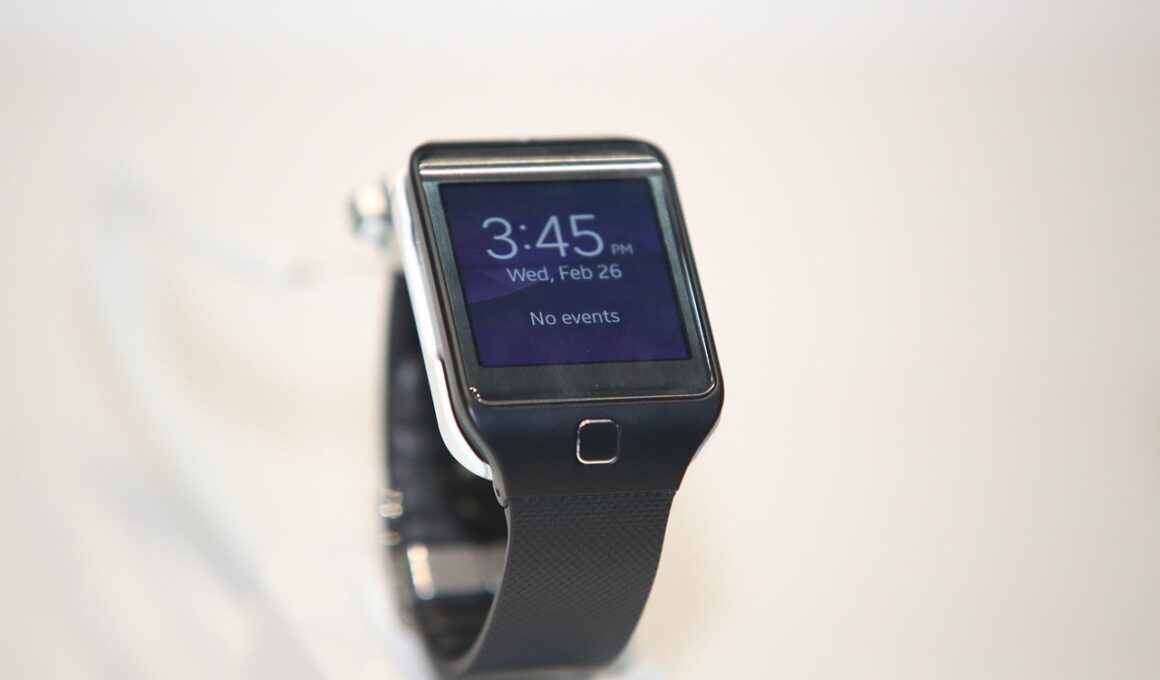How Lifestyle Trackers Complement Calorie Counting Wearables
Fitness technology has revolutionized the way people approach health and wellness, particularly through the emergence of calorie counting devices. These sophisticated wearables track various metrics, including heart rate, steps, and calorie intake, helping users stay aware of their fitness goals. One major advantage of calorie counting wearables is their ability to synchronize with lifestyle trackers, which provide additional insights into daily activities. Combining data from both devices creates a comprehensive overview of one’s fitness journey. Moreover, lifestyle trackers help monitor sleep patterns and stress levels, which are important factors affecting overall well-being. Users can make informed adjustments to their routines, leading to more effective calorie management. The synergy between calorie counting devices and lifestyle trackers enhances accountability through real-time feedback, motivating individuals to maintain healthy habits. Ultimately, when both types of wearables work together, users are better equipped to understand their health landscape, set realistic goals, and achieve sustained weight loss or maintenance. This holistic approach ensures that all aspects of fitness, from activity levels to recovery, are considered in one’s health strategy.
As technology continues to evolve, integrating various fitness monitoring tools allows users to gain a deeper understanding of their lifestyles. Properly utilizing calorie counting wearables requires consistency and accuracy, which can be challenging for many people. Therefore, the integration with lifestyle trackers becomes crucial; these devices often feature user-friendly apps that guide daily habits. For instance, certain lifestyle trackers can suggest calorie counts tailored to specific dietary preferences or fitness objectives. These personalized recommendations empower users to make healthier choices while remaining motivated on their weight management journeys. In addition to physical metrics, lifestyle trackers often promote mindfulness by offering features like guided breathing exercises or reminders to take breaks. This comprehensive awareness helps users remain engaged and focused on their wellness objectives. Furthermore, social features available in these trackers, such as sharing achievements or challenges, create a sense of community that fosters positive reinforcement. Supporting one another in a shared fitness journey can spur motivation, making it less daunting. Workouts can become more enjoyable when paired with friendly competition among peers.
Benefits of Daily Monitoring
Daily monitoring through calorie counting devices and lifestyle trackers allows individuals to truly grasp their daily energy expenditure versus intake. This self-awareness is vital for successful weight management. With features designed to record meals and exercise routines, calorie counting devices keep users informed of their progress toward goals. When integrating lifestyle trackers, users benefit from encompassing insights that reveal how daily activities impact caloric needs. Whether it’s a walk in the park or a rigorous gym session, these types of wearables examine and analyze everything. Advanced analytics provided by such devices can also exponentially increase adherence to fitness regimens. As statistics show, users who track their data receive higher success rates compared to those who do not. Furthermore, many wearables offer reminders that encourage adherence to daily fitness goals, making it easier to motivate oneself. By evaluating data trends, users gain valuable information regarding what strategies work best for them. This leads to sustainable and realistic lifestyle changes, minimizing frustration often associated with weight loss endeavors. Ultimately, smart wearables not only assist in calorie counting but also enhance the overall fitness experience.
Calorie counting wearables come with their own set of challenges, as the accuracy of calorie estimations can vary substantially. These discrepancies often arise from several factors, including varying body compositions and differing metabolic rates. By incorporating lifestyle trackers, which emphasize daily movements, users receive more precise data about their physical exertion levels. This becomes particularly relevant when understanding how different activities affect caloric burn. For example, understanding that a high-intensity interval training session may burn more calories than a leisurely walk empowers users to balance their exercise regimens. This synthesis of information from both types of devices helps maximize caloric output without sacrificing enjoyment in activities. Additionally, tracking meals becomes easier and more intuitive when paired with lifestyle devices that allow scanning barcodes or logging food via voice commands. When logging becomes less cumbersome, adherence to a calorie counting lifestyle improves markedly. In turn, users can engage more with their fitness journeys without feeling overwhelmed or deterred by the logging process. Thus, both types of wearables serve as allies in ensuring fitness accountability remains a priority.
Enhanced User Experience
The beauty of pairing calorie counting devices with lifestyle trackers lies in the enhanced user experience they provide. Combining these technologies offers a richer context through which to view fitness patterns. Many lifestyle devices prioritize aesthetics and user-friendliness, delivering engaging notifications, challenges, and easy navigation. This promotes sustained user interest, allowing individuals to remain committed to their health journey. In contrast, calorie counting wearables typically focus on delivering detailed metrics, which can sometimes feel clinically oriented. Together, however, the unique characteristics of each wearable converge, creating a seamless experience that captivates users. Engaging with both devices offers an interactive approach to health and wellness, making the process enjoyable while adhering to fitness goals. Importantly, improved designs and functionalities can cater to a wider audience, empowering those who may have previously felt intimidated by traditional calorie counting methods. This inclusivity extends the reach of health technology. As broader segments of the population gain access to fitness wearables, healthier lifestyles can emerge. Therefore, innovations in this thriving sector continue to foster advancements that benefit diverse audiences.
The future for calorie counting devices and lifestyle trackers appears increasingly promising as new technologies and developments emerge. With the heightened demand for personalized fitness solutions, innovations such as artificial intelligence algorithms are anticipated to play significant roles. These advancements allow wearables to develop user profiles based on behaviors, preferences, and routines. By analyzing data trends, these devices can provide proactive suggestions and tailored fitness recommendations, ensuring that users stay engaged and motivated. Moreover, wearable technologies continue to evolve into smaller, more ergonomic forms, making them even more accessible for everyday use. As developments in battery life, connectivity, and data accuracy progress, their importance in personal health will amplify. As the industries evolve, expect significant integrations with virtual and augmented reality experiences that will allow users to gamify workouts, making exercise entertaining. These innovations will create incentives for users to explore new fitness avenues, ultimately enhancing adherence to healthy habits. New partnerships between fitness tech companies and healthcare systems may also emerge, offering users better access to medical advice and services as they advance in their fitness journeys.
Conclusion
In conclusion, the combination of calorie counting devices and lifestyle trackers is transforming the landscape of personal health and fitness management. By pairing these technologies, users gain a more comprehensive understanding of their health, leading to better decision-making surrounding nutrition and exercise. The intelligent integration of wearables plays an essential role in motivating users to maintain their fitness regimens. However, it’s crucial for individuals to choose devices that align with their goals and preferences, ensuring the journey stays engaging. As users continue to prioritize fitness technology, the motivation to focus on healthier lifestyles will only grow. Through the seamless connection between these devices, both aspects of health can be seamlessly monitored, leading to a holistic and informed health journey. The commitment to tracking calorie intake and energy expenditure can foster broader communal engagement. In turn, creating supportive environments where users inspire one another can lead to widespread lifestyle changes. Being cautious of wearable limitations yet embracing their benefits ensures that users can navigate the complexities of health management more effectively. The synergy between calorie counting wearables and lifestyle trackers will undoubtedly pave the way for future innovations in fitness technology.


